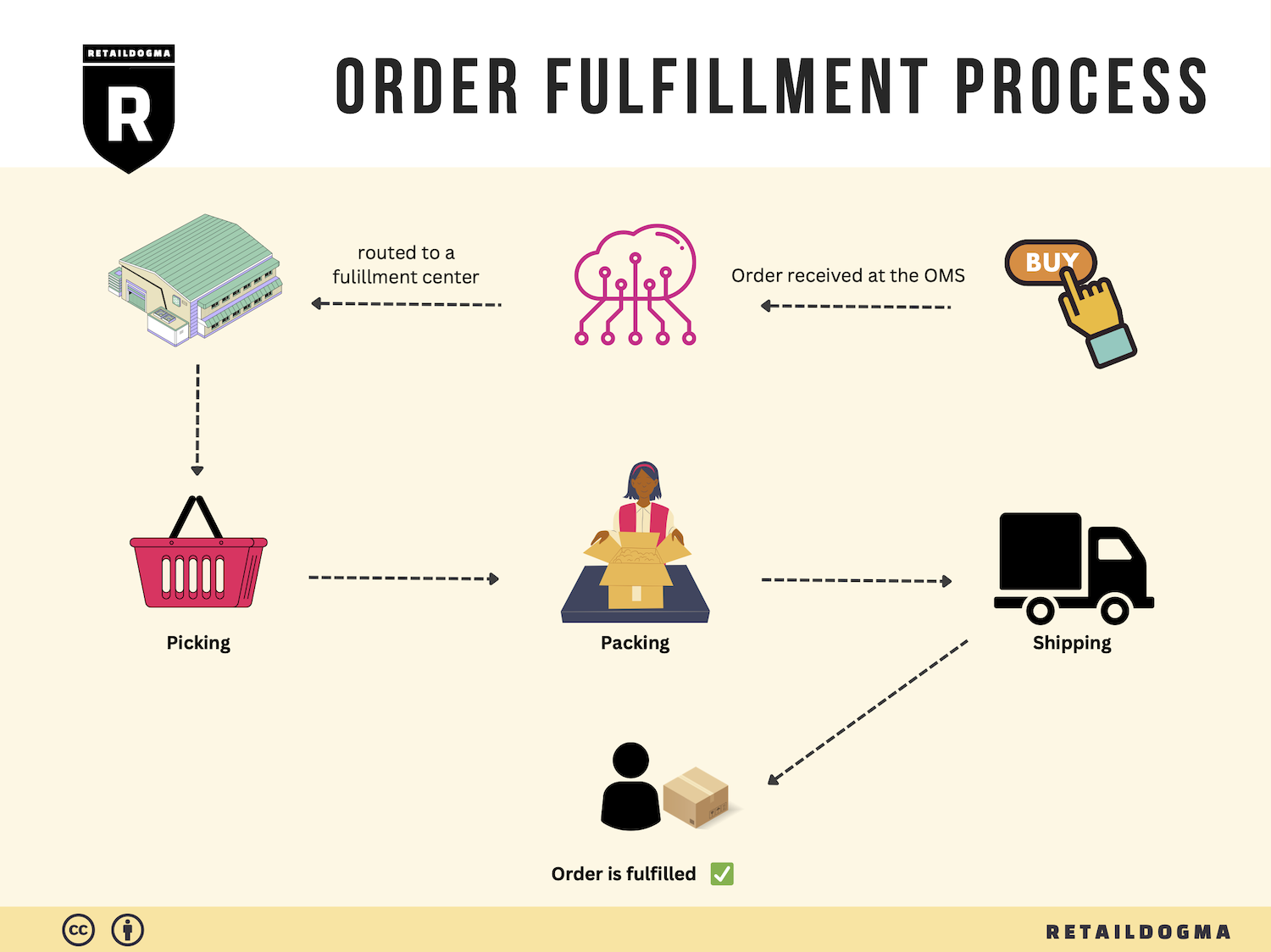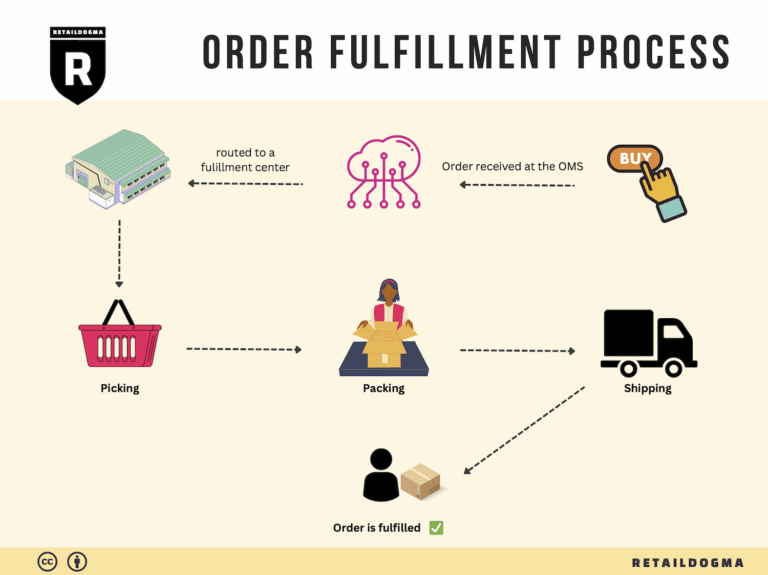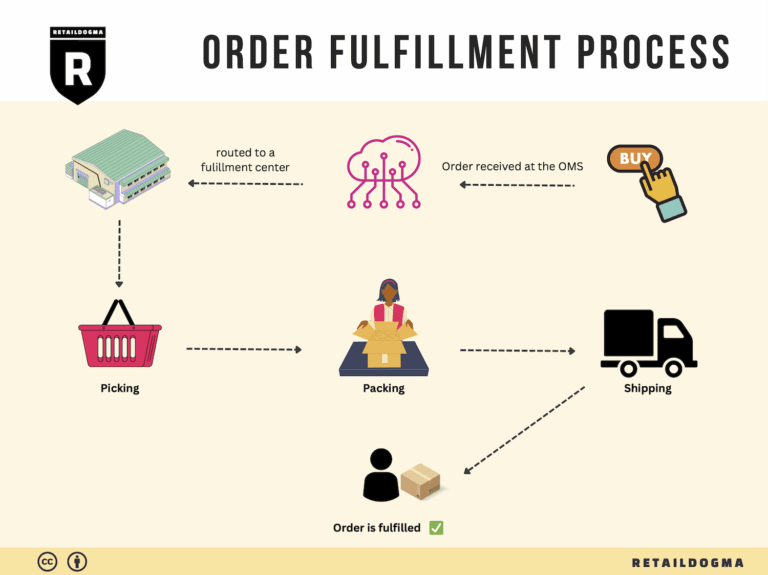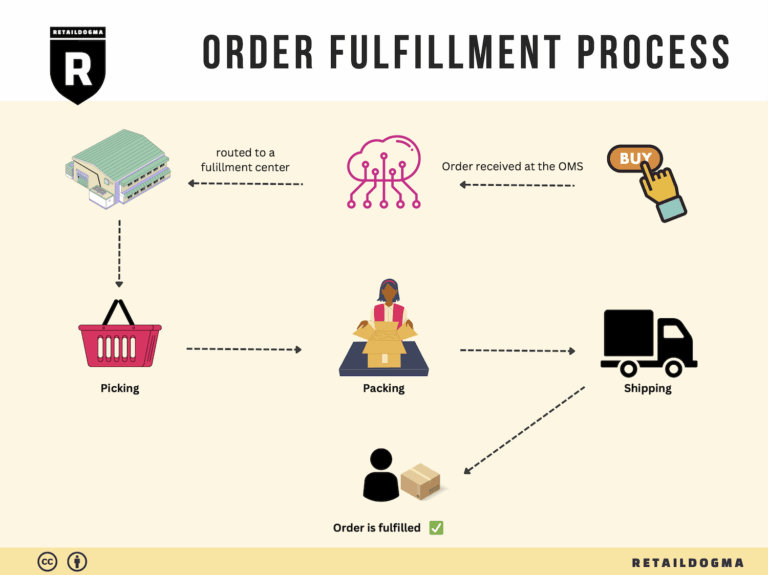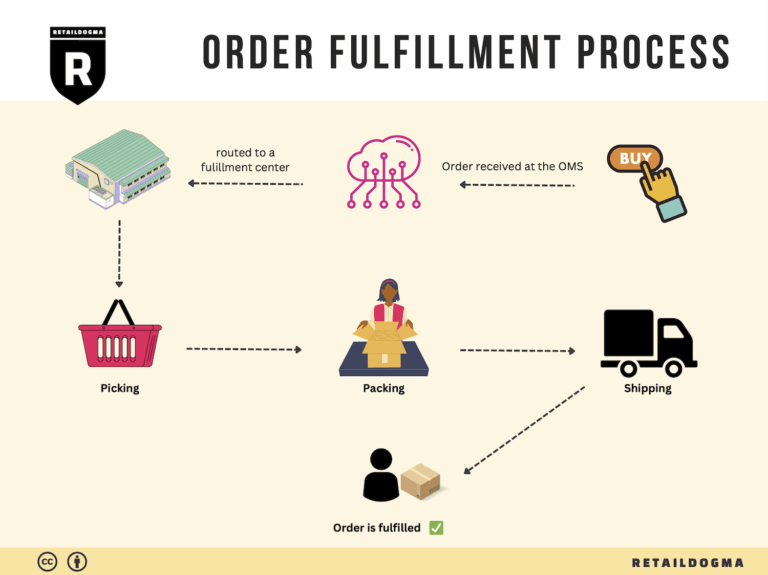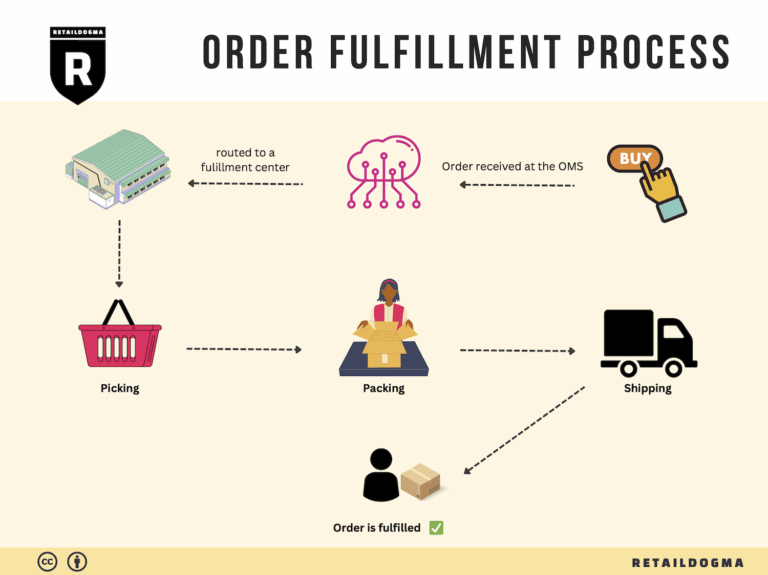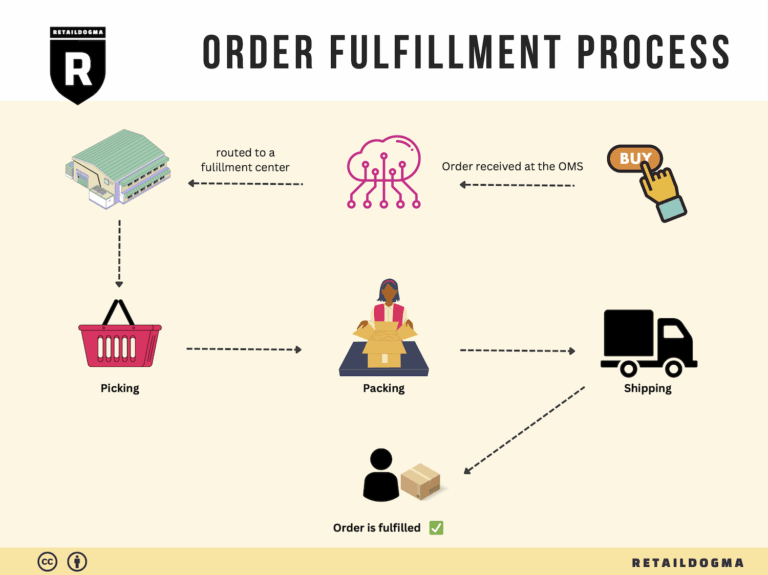How Order Fulfillment Works: A Step-by-Step Guide for Businesses
What is E-commerce Fulfillment? An Introduction for Growing Businesses
Understanding the Fulfillment Process
As an e-commerce business owner, you may find yourself grappling with one of the most challenging aspects of scaling your operations: the packing and shipping of orders. The excitement of growing sales can quickly turn into a logistical nightmare if you’re overwhelmed with fulfillment tasks. From managing inventory to ensuring timely deliveries, the complexities can distract you from what truly matters—growing your business.
Fulfillment, at its core, is the process of getting a product from your warehouse or fulfillment center to the customer’s doorstep. This seemingly straightforward task encompasses a range of activities, including receiving inventory, picking and packing orders, and shipping them out efficiently. As your business expands, understanding the nuances of e-commerce fulfillment becomes crucial for maintaining customer satisfaction and operational efficiency.
In this guide, we will explore various fulfillment models that can suit your business needs. We’ll delve into options such as Third-Party Logistics (3PL) providers and Amazon’s Fulfillment by Amazon (FBA) program, each offering unique advantages and challenges. Understanding these models will help you determine which aligns best with your business strategy.
Additionally, we will outline the core services typically offered by fulfillment partners. These services may include inventory management, order processing, returns handling, and shipping logistics. Knowing what to expect from a fulfillment partner can streamline your decision-making process and enhance your operational capabilities.
Choosing the right fulfillment partner is another critical aspect we will cover. Factors such as location, technology integration, customer service, and scalability should all be considered. This guide will provide insights into how to evaluate potential partners and make informed decisions that align with your growth objectives.
Pricing can often be a confusing aspect of fulfillment services. We will break down common pricing structures, including per-order fees, storage costs, and shipping rates, to help you understand the total cost of fulfillment. This knowledge will empower you to budget effectively and negotiate better terms with potential partners.
Ultimately, this guide aims to empower you as a business owner to make smart, strategic decisions about your logistics. By gaining a comprehensive understanding of e-commerce fulfillment, you can focus on scaling your sales while ensuring your customers receive their orders promptly and accurately.
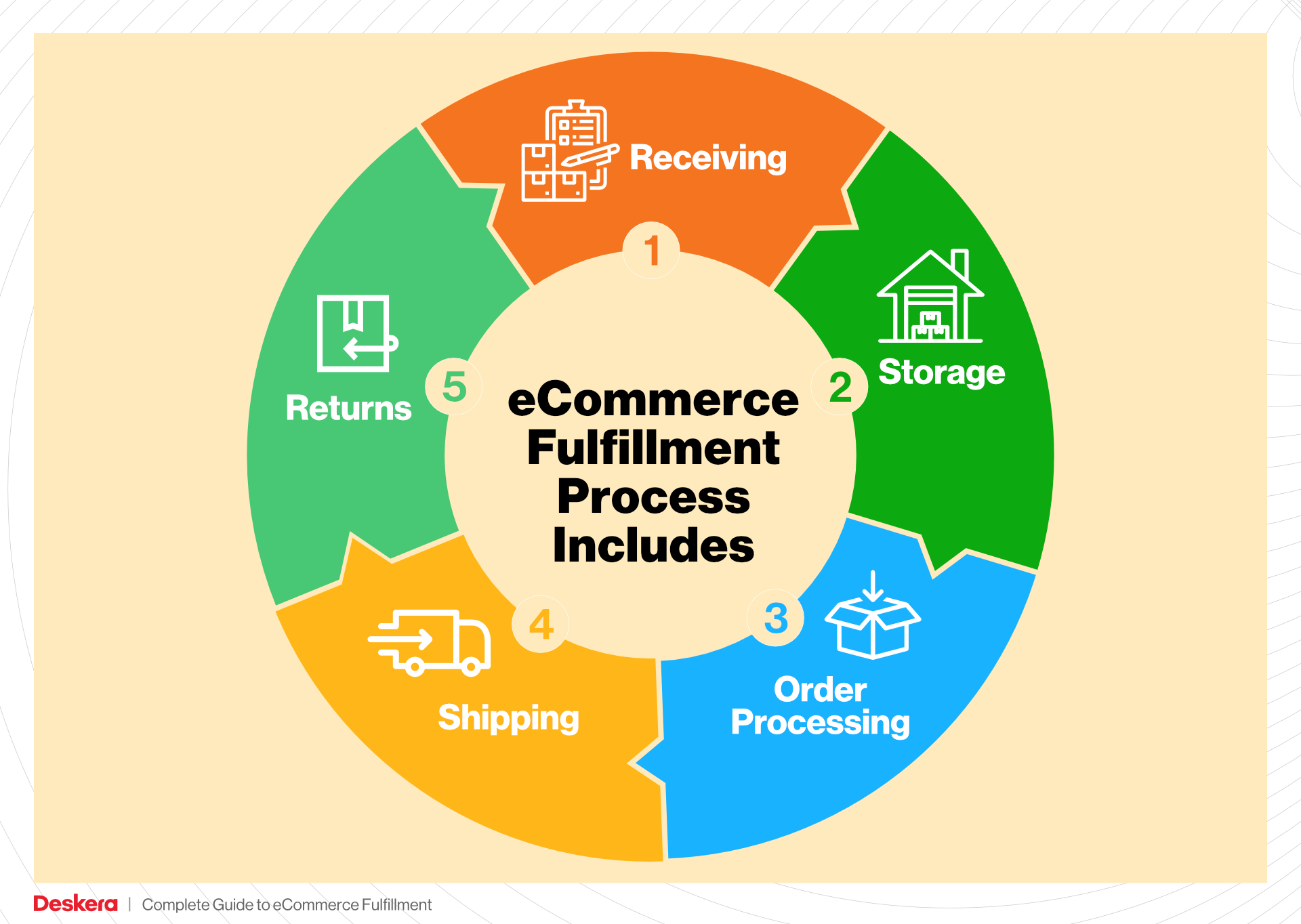
What You’ll Learn In This Guide
- What is E-commerce Fulfillment? An Introduction for Growing Businesses
- The Order Fulfillment Process: From ‘Buy’ Button to Customer’s Door
- Comparing Fulfillment Models: In-House vs. 3PL vs. Dropshipping
- A Deep Dive into Amazon FBA: Pros, Cons, and Who It’s For
- Core Services Offered by Fulfillment Centers
- How to Choose a Fulfillment Partner: A 6-Point Checklist
- Understanding Fulfillment Pricing: A Breakdown of Common Fees
- Frequently Asked Questions (FAQs) about Fulfillment
- Conclusion: Is Outsourcing Fulfillment the Right Move for Your Business?
- Important Disclaimer
The Order Fulfillment Process: From ‘Buy’ Button to Customer’s Door
1. Receiving Inventory
The order fulfillment process begins with receiving inventory at the fulfillment center. This step is critical as it ensures that the right products are available for order processing. During this stage, goods arrive at the facility through various transportation methods, including trucks and pallets. The warehouse staff checks incoming shipments against purchase orders to confirm accuracy and quality.
Key terms associated with this step include SKU (Stock Keeping Unit), which is a unique identifier for each product. SKUs help in tracking inventory levels and facilitate efficient inventory management. Proper receiving procedures are vital to minimize discrepancies and ensure that the fulfillment center has the necessary stock to meet customer demand. An efficient receiving process sets the foundation for smooth operations downstream.
2. Warehouse Storage
Once inventory has been received and validated, it is then stored within the fulfillment center. This step involves organizing products in a manner that maximizes space and accessibility. Items are typically stored in designated areas based on categories, sizes, or sales velocity, allowing for efficient retrieval during order processing.
The importance of this step lies in optimizing inventory turnover—the rate at which inventory is sold and replaced. By strategically placing high-demand items closer to the picking area, fulfillment centers can reduce the time it takes to fulfill orders. Effective warehouse storage practices also help in reducing the risk of stockouts and overstocks, which can negatively impact customer satisfaction and operational costs.
3. Order Picking
Order picking is the process of retrieving items from storage to fulfill customer orders. When a customer places an order, the fulfillment center generates a pick list, which outlines the specific items and quantities required for that order. Warehouse staff then use this list to locate and collect the products from their respective storage locations.
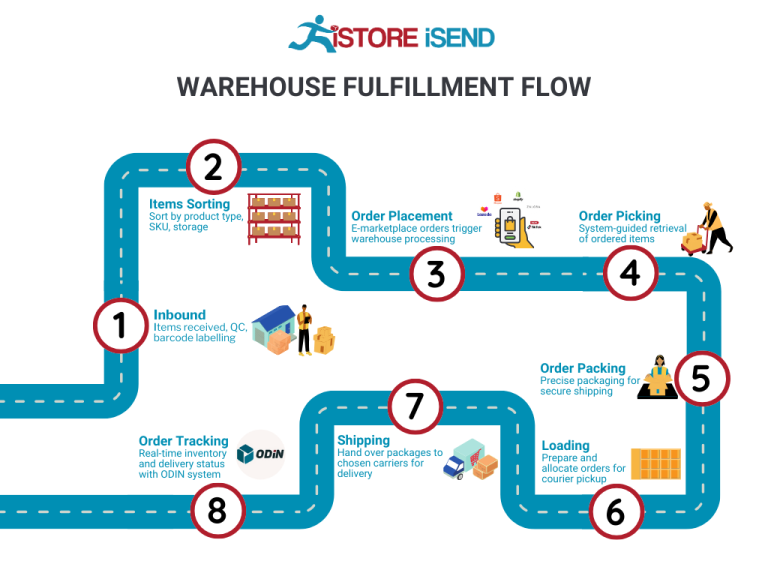
This step is crucial as it directly impacts the speed and accuracy of order fulfillment. Efficient picking methods, such as batch picking or zone picking, can significantly enhance productivity. Technologies like barcode scanners or pick-to-light systems can also streamline this process, reducing human error and ensuring that the correct items are selected. Ultimately, effective order picking enhances customer satisfaction by ensuring timely and accurate deliveries.
4. Order Packing
After items have been picked, they are moved to the packing area, where they undergo the packing process. This step involves carefully packing the products in appropriate packaging materials to ensure they arrive at the customer’s doorstep in perfect condition. The packing team must consider factors such as product fragility, weight, and shipping method when selecting packaging materials.
The significance of this step is highlighted by the concept of dimensional weight pricing used by many carriers, which takes into account the size of the package along with its weight. Proper packing can reduce shipping costs and prevent damage during transit, leading to lower return rates and increased customer satisfaction. Additionally, packing slips and labels are printed during this stage, providing essential information for both the customer and the shipping carrier.
5. Shipping & Delivery
The final step in the order fulfillment process is shipping and delivery. Once packages are packed, they are labeled and sorted for shipment. This process involves choosing the most efficient shipping methods and carriers based on factors such as delivery speed, cost, and destination. Fulfillment centers often utilize shipping software to automate label printing and track shipments.
This step is critical as it determines how quickly and efficiently customers receive their orders. Timely shipping enhances customer satisfaction and loyalty, which are key drivers of repeat business. Moreover, tracking capabilities provide transparency to customers, allowing them to monitor their orders in real-time. Effective shipping and delivery processes not only optimize operational efficiency but also contribute significantly to the overall customer experience.
By understanding and optimizing each of these five steps—receiving inventory, warehouse storage, order picking, order packing, and shipping & delivery—e-commerce businesses can scale their operations efficiently and enhance customer satisfaction, ultimately driving growth and profitability.
Comparing Fulfillment Models: In-House vs. 3PL vs. Dropshipping
Comparison of Fulfillment Models
| Model | Who Handles Inventory | Best For (Business Stage) | Key Advantage | Key Disadvantage |
|---|---|---|---|---|
| In-House Fulfillment | The business itself | Established businesses | Full control over inventory and processes | High overhead costs and resource requirements |
| Third-Party Logistics (3PL) | External logistics provider | Growing businesses | Scalability and reduced operational burden | Less control over inventory and fulfillment speed |
| Dropshipping | Supplier or manufacturer | Startups and small businesses | Low upfront investment and risk | Lower profit margins and potential quality issues |
In-House Fulfillment
In-house fulfillment involves managing the entire logistics process internally. This model is common among established businesses that have the resources to invest in warehousing, staff, and technology. Companies that choose in-house fulfillment typically have a dedicated team for inventory management, order processing, packing, and shipping.
The primary advantage of in-house fulfillment is the complete control it offers over inventory and operational processes. Businesses can customize their fulfillment strategies to align closely with their brand values and customer expectations. This model allows for direct oversight of quality control, enabling businesses to maintain high standards for packaging and shipping.
However, in-house fulfillment can be resource-intensive. It requires significant capital investment in infrastructure, technology, and staffing. Additionally, as order volumes grow, businesses may find it challenging to scale operations efficiently. The fixed costs associated with maintaining a warehouse, along with the complexities of managing logistics, can strain resources, particularly for businesses with fluctuating sales patterns.
Third-Party Logistics (3PL)
Third-party logistics (3PL) providers offer outsourced logistics services, including warehousing, fulfillment, and distribution. This model is ideal for growing businesses that want to scale operations without the burden of managing logistics themselves. By partnering with a 3PL, companies can leverage the provider’s expertise, technology, and infrastructure to enhance their fulfillment processes.
The key advantage of using a 3PL is scalability. As businesses grow and demand fluctuates, 3PLs can adjust their services accordingly, allowing companies to focus on core activities such as marketing and product development. Additionally, 3PL providers often have established networks and relationships with carriers, which can result in lower shipping costs and faster delivery times.
On the downside, outsourcing to a 3PL means relinquishing some control over the fulfillment process. Businesses may encounter challenges related to communication, inventory accuracy, and order fulfillment speed. Any issues at the 3PL’s facility can directly impact the customer experience, making it crucial for businesses to choose a reliable partner. Moreover, there can be additional fees associated with using 3PL services, which can affect profit margins.
Dropshipping
Dropshipping is a fulfillment model where the retailer does not hold inventory. Instead, when a customer places an order, the retailer purchases the item from a third-party supplier who then ships it directly to the customer. This model is particularly appealing for startups and small businesses due to its low upfront investment and minimal risk.
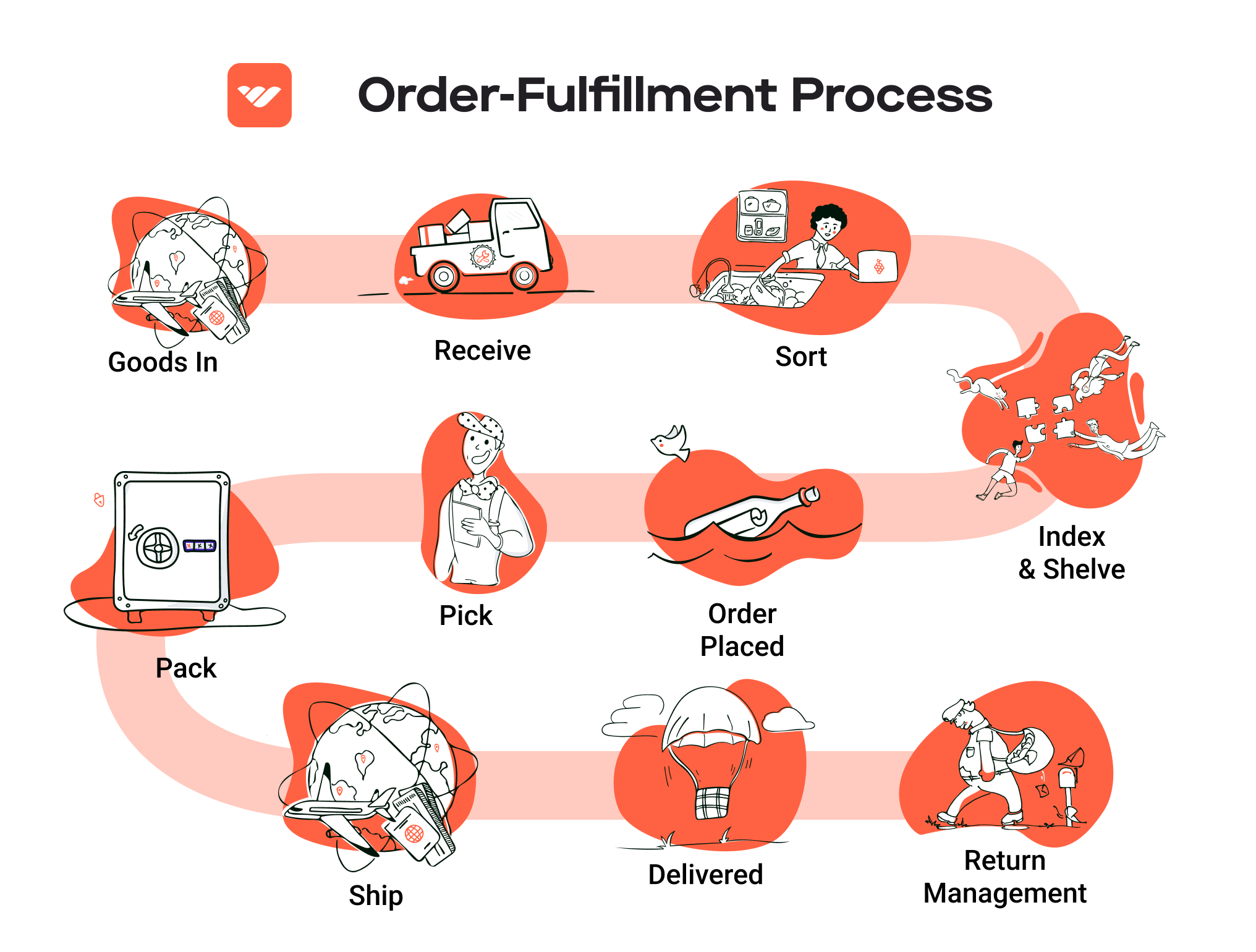
One of the primary advantages of dropshipping is that it eliminates the need for inventory management, warehousing, and fulfillment logistics. Retailers can offer a wide range of products without the financial burden of purchasing inventory upfront. This allows for greater flexibility in product offerings and the ability to test new markets with reduced risk.
However, dropshipping also comes with notable disadvantages. Profit margins can be lower compared to other fulfillment models, as retailers must pay the supplier’s wholesale price. Additionally, reliance on third-party suppliers can lead to quality control issues and longer shipping times, which can negatively impact customer satisfaction. Retailers have limited control over the fulfillment process, making it essential to carefully select reliable suppliers to mitigate potential issues.
Conclusion
Choosing the right fulfillment model is critical for e-commerce businesses aiming to scale effectively. In-house fulfillment offers control but requires substantial resources, while 3PL provides scalability and efficiency at the cost of some oversight. Dropshipping, on the other hand, minimizes risk and investment but can lead to challenges with margins and quality. Understanding the strengths and weaknesses of each model will help business owners make informed decisions that align with their growth strategies.
A Deep Dive into Amazon FBA: Pros, Cons, and Who It’s For
Understanding Fulfillment by Amazon (FBA)
Fulfillment by Amazon (FBA) is a service provided by Amazon that allows sellers to store their products in Amazon’s fulfillment centers. In return, Amazon takes care of storage, packaging, and shipping of these products directly to customers. This service simplifies the logistics for sellers, enabling them to focus on scaling their business while leveraging Amazon’s extensive distribution network and customer base.
How FBA Works
-
Inventory Preparation and Shipping: Sellers prepare their products according to Amazon’s guidelines and ship them to designated fulfillment centers. This involves labeling items correctly and ensuring they meet Amazon’s packaging requirements.
-
Storage: Once the inventory is received at the fulfillment center, it is stored until an order is placed. Amazon uses advanced inventory management systems to track stock levels and ensure items are stored efficiently.
-
Order Processing: When a customer places an order, Amazon’s system automatically identifies the nearest fulfillment center that has the product in stock. The order is then picked, packed, and shipped by Amazon’s staff.
-
Customer Service and Returns: Amazon also handles customer service and return management for FBA orders, providing support to customers and processing returns on behalf of sellers.
-
Payment: Sellers receive payments for their sales, minus Amazon’s fees for using the FBA service.
Pros of Using FBA
-
Prime Eligibility: Products fulfilled through FBA are eligible for Amazon Prime, which can significantly increase sales. Prime members often prefer products that are Prime eligible due to the fast, free shipping.
-
Customer Trust: By using FBA, sellers benefit from the trust that Amazon has built with its customers. Buyers are more likely to purchase products fulfilled by Amazon because they expect reliable shipping and excellent customer service.
-
Multi-Channel Fulfillment: FBA allows sellers to fulfill orders from other sales channels, such as their own websites or other marketplaces. This means sellers can use Amazon’s logistics capabilities to manage orders from multiple sources.
-
Scalability: FBA provides a scalable solution for sellers. As demand for products increases, sellers can easily send more inventory to Amazon without needing to manage additional warehousing and logistics.
-
Time Savings: Outsourcing storage, packing, and shipping to Amazon frees up sellers to focus on other critical areas of their business, such as marketing and product development.
Cons of Using FBA
-
High Fees: Amazon charges various fees for using FBA, including storage fees and fulfillment fees. For some sellers, especially those with lower-priced items, these fees can significantly cut into profit margins.
-
Strict Inventory Rules: FBA has stringent requirements regarding inventory management, including guidelines for labeling, packaging, and product condition. Failure to comply can result in additional fees or even the removal of inventory.
-
Commingling Risks: When using FBA, sellers’ products may be stored alongside those from other sellers. This commingling can lead to issues such as receiving returns for items that do not belong to the seller or challenges in tracking inventory.
-
Limited Control: By using FBA, sellers relinquish some control over the fulfillment process. This includes aspects like shipping speed and packaging, which may not align with the seller’s brand standards.
-
Long-Term Storage Fees: Products that remain in Amazon’s fulfillment centers for extended periods may incur long-term storage fees. This can be a concern for sellers with slow-moving inventory.
Who is FBA Best For?
Fulfillment by Amazon is particularly advantageous for:
-
Small to Medium-Sized Businesses: Businesses looking to scale quickly without the overhead of managing their own warehouses will find FBA appealing. It allows them to leverage Amazon’s infrastructure and customer base.
-
Sellers with High-Volume Products: Sellers who have products that move quickly and can maintain high sales volumes are more likely to benefit from FBA, as the fees will be offset by increased sales.
-
Brands Seeking Brand Trust: New or emerging brands that want to build credibility can benefit from the trust associated with Amazon. FBA can help them reach a broader audience more effectively.
-
Multi-Channel Sellers: Businesses that sell on multiple platforms will find FBA useful for streamlining their logistics across different sales channels.
-
Entrepreneurs Focused on Growth: For sellers who want to focus on scaling their operations rather than logistics, FBA provides a hassle-free solution that allows them to prioritize growth.
In conclusion, Fulfillment by Amazon presents a powerful opportunity for e-commerce businesses to leverage Amazon’s logistics and customer service. While there are notable advantages, such as Prime eligibility and increased customer trust, potential sellers should carefully consider the associated costs and rules. Ultimately, FBA is best suited for those who can align its benefits with their business strategies and growth objectives.
Core Services Offered by Fulfillment Centers
Inventory Management & Warehousing
Inventory management and warehousing are foundational services provided by fulfillment centers that enable e-commerce businesses to streamline their operations. Fulfillment centers maintain large, organized warehouses where inventory is stored securely. This involves tracking stock levels, managing incoming and outgoing shipments, and ensuring that products are readily available for order fulfillment.
The benefit of effective inventory management is twofold. First, it minimizes the risk of stockouts, ensuring that popular items are always available for customers, which directly impacts sales. Second, it helps in reducing holding costs associated with excess inventory. With sophisticated inventory management systems in place, businesses can gain real-time insights into stock levels and trends, allowing for informed decision-making regarding reordering and inventory turnover. This capability can lead to improved cash flow and a more agile response to market demands.
Pick and Pack Services
Pick and pack services are crucial for the order fulfillment process within a fulfillment center. This service involves selecting items from the warehouse shelves (picking) based on customer orders and then packing them securely for shipping. Fulfillment centers utilize technology such as barcode scanners and automated systems to enhance the efficiency and accuracy of this process.
For e-commerce businesses, the pick and pack process offers significant advantages. It speeds up order processing times, ensuring that customers receive their products quickly, which is a critical factor in customer satisfaction and repeat business. Additionally, by outsourcing these services to a fulfillment center, businesses can focus on other core activities, such as marketing and product development, rather than getting bogged down in logistics. The combination of speed and accuracy in order fulfillment can also lead to lower operational costs and improved customer loyalty.
Kitting and Assembly
Kitting and assembly services provided by fulfillment centers allow businesses to create product bundles or kits, which can enhance the customer experience and encourage higher sales volumes. This service includes assembling multiple products into a single package, often for promotional purposes or to create a complete solution for customers. For instance, a fulfillment center might combine a camera with a case and extra memory cards to create a complete photography kit.
The benefits of kitting and assembly services are substantial. Businesses can offer more attractive product options that increase the perceived value to customers. This can lead to higher average order values and improved sales. Furthermore, by outsourcing kitting to a fulfillment center, businesses can save time and resources, allowing them to scale operations without the need for additional labor or space. This flexibility is especially important for seasonal promotions or product launches, where demand can fluctuate significantly.
Returns Management (Reverse Logistics)
Returns management, also known as reverse logistics, is a critical service offered by fulfillment centers that can significantly impact an e-commerce business’s bottom line. This service involves handling returned items, processing refunds or exchanges, and restocking products as needed. Effective returns management systems are essential for maintaining customer satisfaction and loyalty, as a seamless return process can enhance the overall shopping experience.
The primary benefit of robust returns management is the ability to recover value from returned goods. Fulfillment centers can efficiently inspect, refurbish, or repackage returned items for resale, minimizing losses associated with returns. Additionally, an organized returns process can provide valuable data on customer preferences and product performance, informing future business strategies. By leveraging the expertise of fulfillment centers in managing returns, businesses can focus on growth initiatives while ensuring that their customers feel valued and supported throughout their purchasing journey.
In conclusion, the core services offered by fulfillment centers—inventory management and warehousing, pick and pack services, kitting and assembly, and returns management—are integral to the success of e-commerce businesses. By leveraging these services, companies can enhance operational efficiency, improve customer satisfaction, and ultimately drive sales growth. As e-commerce continues to evolve, partnering with a capable fulfillment center can provide the scalability and flexibility needed to thrive in a competitive marketplace.
How to Choose a Fulfillment Partner: A 6-Point Checklist
Location & Warehouse Network
Importance: The geographic location of your fulfillment partner’s warehouses significantly impacts shipping costs, delivery times, and overall customer satisfaction. A partner with a well-distributed network can ensure quicker deliveries and lower transportation costs, which are critical for maintaining competitive advantage.
Questions to Ask:
– Where are your warehouses located, and how do these locations align with my customer base?
– Do you have multiple warehouses to facilitate faster shipping?
– How do you handle shipping to international destinations?
– What are your average shipping times to various regions?
Technology & Integrations
Importance: In today’s digital age, the technology used by your fulfillment partner can make or break your operations. A partner with robust technology can provide real-time inventory tracking, seamless integration with your e-commerce platform, and automated processes that reduce errors and improve efficiency.
Questions to Ask:
– What technology platforms do you use for inventory management and order processing?
– Can your systems integrate with my current e-commerce platform (e.g., Shopify, WooCommerce, Amazon)?
– How do you ensure data security and compliance with regulations?
– Do you offer real-time tracking for both inventory and shipments?
Specializations (e.g., cold storage, oversized items)
Importance: Depending on your product range, you may require specialized services. If you sell perishable goods, for instance, your partner should have appropriate cold storage facilities. Similarly, if your products are oversized or require special handling, ensure your partner has the capability to manage these efficiently.
Questions to Ask:
– Do you have specialized facilities for my product type (e.g., cold storage, hazardous materials)?
– How do you handle products that require special handling or storage?
– What experience do you have in fulfilling orders for businesses in my industry?
– Can you accommodate unique packaging or shipping requirements?
Scalability & Capacity
Importance: As your business grows, your fulfillment needs will evolve. A good partner should be able to scale their services in line with your growth trajectory. This includes having the capacity to handle seasonal spikes in demand without compromising service quality.
Questions to Ask:
– How do you manage seasonal demand fluctuations?
– What is your capacity for scaling operations as my business grows?
– Can you provide examples of how you’ve supported other clients during periods of growth?
– Are there any limits to the volume of orders you can handle?
Pricing and Contracts
Importance: Understanding the pricing structure and contract terms of a potential partner is crucial for budgeting and financial planning. Look for transparency in pricing and avoid hidden fees that can erode your margins.
Questions to Ask:
– What is your pricing structure (e.g., per order, per item, monthly fees)?
– Are there additional fees for services like returns, storage, or special handling?
– What are the terms of the contract, and how flexible are they?
– Can you provide a detailed breakdown of costs associated with your services?
Customer Support & Reviews
Importance: Effective customer support is vital for resolving issues quickly and maintaining smooth operations. Additionally, reviews and testimonials from other clients can provide insight into the partner’s reliability and service quality.
Questions to Ask:
– What customer support channels do you offer (e.g., phone, email, chat)?
– What are your average response times for support inquiries?
– Can you provide references or case studies from clients in my industry?
– How do you handle fulfillment errors or customer complaints?
Conclusion
Choosing the right fulfillment partner is a critical decision that can impact your e-commerce business’s efficiency, customer satisfaction, and ultimately, profitability. By following this checklist and asking the right questions, you can make an informed choice that aligns with your business goals and growth plans. Take the time to thoroughly evaluate potential partners, as the right fit can serve as a strong foundation for your logistics and fulfillment strategy.
Understanding Fulfillment Pricing: A Breakdown of Common Fees
Initial Setup Fees
When partnering with a fulfillment center, many providers charge an initial setup fee. This fee covers the costs associated with onboarding your business into their system, which may include account setup, integration with your e-commerce platform, and training. The setup process might also involve the initial configuration of inventory management systems to track your products efficiently.
Typically, initial setup fees can range from a few hundred to several thousand dollars, depending on the complexity of your operations and the fulfillment center’s capabilities. To get an accurate quote, consider discussing your specific needs with the provider and inquire about any additional services that might be included in the setup process.
Receiving Fees
Receiving fees are charged for the process of accepting and processing your inventory when it arrives at the fulfillment center. This includes unloading products, checking them against shipping documents, and entering them into the warehouse management system. The receiving fee is usually calculated per pallet or per item received.
For example, a fulfillment center might charge $20 per pallet or $0.30 per item. Understanding this fee structure is crucial, as it can significantly impact your overall costs, especially if you frequently send large shipments. To minimize receiving fees, consider consolidating shipments and ensuring that all items are properly labeled and packaged to streamline the receiving process.
Storage Fees (per pallet/bin)
Storage fees are incurred for the space your products occupy within the fulfillment center. These fees can be calculated on a per-pallet or per-bin basis and are typically charged monthly. Storage fees vary based on the size and type of products being stored, with larger items often incurring higher fees.
For instance, storage fees might be $25 per pallet per month or $5 per bin per month. It’s essential to monitor your inventory levels to avoid overstocking, as excessive storage can lead to increased costs. Additionally, some fulfillment centers may have long-term storage fees for items that remain in their facilities for extended periods, so it’s wise to regularly review your inventory turnover rates.
Pick & Pack Fees (per item/order)
Pick and pack fees cover the labor involved in retrieving items from storage and preparing them for shipment. This fee is generally calculated on a per-item or per-order basis. For example, a fulfillment center may charge $1.50 per item picked and packed or a flat fee of $3.00 per order, regardless of the number of items.
Understanding this fee is vital for budgeting, as it directly correlates with your sales volume. To optimize costs, consider simplifying your product offerings or using standardized packaging that can reduce packing time. Additionally, establishing a clear communication channel with your fulfillment center can help streamline the picking process and potentially reduce fees.
Shipping Fees
Shipping fees are often one of the most significant costs associated with fulfillment services. These fees cover the transportation of packages from the fulfillment center to the end customer. Shipping costs can vary widely based on factors such as package dimensions, weight, destination, and the shipping method selected (e.g., standard, expedited, or international).
Many fulfillment centers offer tiered pricing based on shipping volume, which means the more you ship, the lower your rates can be. It’s essential to negotiate shipping rates with your fulfillment partner and explore options such as using multiple carriers to find the most cost-effective solutions. Additionally, utilizing a fulfillment center located strategically close to your primary customer base can help reduce shipping costs.
Tips for Getting an Accurate Quote
-
Be Detailed: When requesting a quote, provide as much information as possible about your business model, product types, and expected order volumes. This will help the fulfillment center give you a more accurate estimate.
-
Understand Fee Structures: Familiarize yourself with the various fee structures and ask for clarity on anything that seems ambiguous. Knowing how fees are calculated will help you budget more effectively.
-
Negotiate: Don’t hesitate to negotiate fees, especially if you anticipate high volumes or long-term partnerships. Many fulfillment centers are willing to offer discounts for committed business.
-
Request a Breakdown: Ask for a detailed breakdown of all potential fees. This transparency will allow you to see where costs might arise and help you identify areas for optimization.
-
Consider Additional Services: Inquire about additional services that might incur extra fees, such as returns processing or custom packaging. Understanding the full scope of services will help you avoid unexpected costs down the line.
By being informed and proactive in your discussions with fulfillment centers, you can ensure that you receive a comprehensive and accurate quote that aligns with your business needs.
Frequently Asked Questions (FAQs) about Fulfillment
1. What is an Amazon Fulfillment Center?
An Amazon Fulfillment Center is a specialized facility where Amazon processes orders. These centers store inventory and manage the logistics of picking, packing, and shipping products to customers. They play a crucial role in ensuring timely delivery and efficient order management for both Amazon and third-party sellers using Fulfillment by Amazon (FBA).
2. How does a fulfillment center differ from a warehouse?
While both fulfillment centers and warehouses store products, their purposes differ significantly. A warehouse primarily focuses on storage, often for long-term inventory management. In contrast, a fulfillment center is designed for rapid order processing and shipping, handling tasks such as picking and packing orders for immediate dispatch.
3. What activities take place during an Amazon fulfillment center tour?
During an Amazon fulfillment center tour, visitors can observe various operational processes, including inventory receiving, order picking, packing, and shipping. The tour typically highlights the advanced technology and robotics used to streamline operations, as well as the safety measures in place for employees and visitors.
4. How long does the tour last?
The Amazon fulfillment center tour typically lasts between 60 to 90 minutes. Participants should be prepared for a walking experience that includes navigating stairs and covering approximately one mile within the facility.
5. What should I wear for the tour?
Visitors must adhere to a strict dress code for safety reasons. Attire should include flat, closed-toed shoes (no sandals or high heels), long pants, and shirts with sleeves. Loose clothing and accessories that could pose a safety risk are not permitted.
6. Are there age restrictions for participants?
Yes, the minimum age for participating in the tour is 6 years old. Children under this age are not allowed. Additionally, minors must be accompanied by an adult, with a requirement of one adult for every ten minors.
7. What identification is required for the tour?
Guests must present a government-issued photo ID upon arrival. It is essential that the information submitted during the registration process matches the ID presented. Minors do not need to provide identification.
8. Can I take photos during the tour?
Photography is restricted during the tour. Cell phones are not allowed, and still photography is only permitted in designated areas. Participants are encouraged to leave their phones in a secure location provided by the tour staff.
9. What is a 3PL, and how does it relate to fulfillment centers?
A Third-Party Logistics (3PL) provider is a company that offers outsourced logistics services, which can include fulfillment, shipping, and warehousing. Fulfillment centers, like those operated by Amazon, can function as 3PLs, especially for sellers using the FBA program, allowing businesses to leverage Amazon’s logistics infrastructure.
10. How much do fulfillment services cost?
Fulfillment service costs can vary widely based on factors such as the volume of orders, storage space required, and specific services utilized (e.g., packing materials, special handling). For Amazon’s FBA program, sellers can expect fees that include storage fees for inventory and fulfillment fees per order, which cover picking, packing, and shipping. It’s crucial for businesses to evaluate their specific needs and compare different fulfillment options to determine the most cost-effective solution.
Conclusion: Is Outsourcing Fulfillment the Right Move for Your Business?
Evaluating the Benefits of Outsourcing Fulfillment
Outsourcing fulfillment can be a transformative decision for e-commerce businesses looking to scale. By leveraging a specialized fulfillment service, companies can save significant time and resources. Instead of managing the complexities of inventory management, packing, and shipping, business owners can focus on core activities such as marketing, product development, and customer engagement. This shift not only enhances productivity but also allows for more strategic growth initiatives.
Another critical advantage is scalability. As your business experiences growth, the demands on your logistics and supply chain can quickly become overwhelming. A reliable fulfillment partner can adapt to your changing needs, whether you’re ramping up for seasonal spikes or expanding your product lines. This flexibility ensures that you can meet customer expectations without the burden of investing in additional infrastructure or workforce.
Moreover, partnering with a fulfillment service brings in a level of expertise that can significantly improve operational efficiency. These specialists are equipped with the latest technologies and best practices in logistics, which can enhance accuracy in order processing and reduce shipping times. By utilizing their knowledge, your business can improve its service levels, ultimately leading to higher customer satisfaction and retention.
Choosing the right fulfillment partner is crucial for your business’s growth trajectory. It’s essential to conduct thorough research and consider factors such as reliability, technology integration, and customer service.
Take Action
To determine if outsourcing fulfillment is the right next step for your business, conduct an audit of your current shipping processes. Evaluate your time investment, costs, and the scalability of your existing operations. This critical assessment will guide you in making an informed decision, positioning your business for sustainable growth in the competitive e-commerce landscape.
Important Disclaimer
⚠️ Important Disclaimer
The information in this guide is for educational purposes. Fulfillment services, pricing, and platform features change frequently. Always conduct your own due diligence and consult with providers directly before making business decisions.
